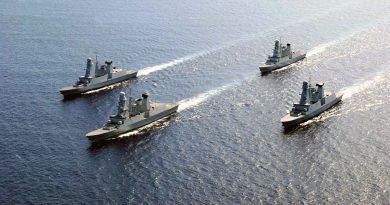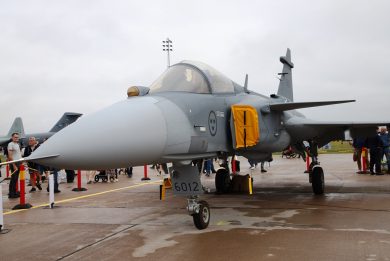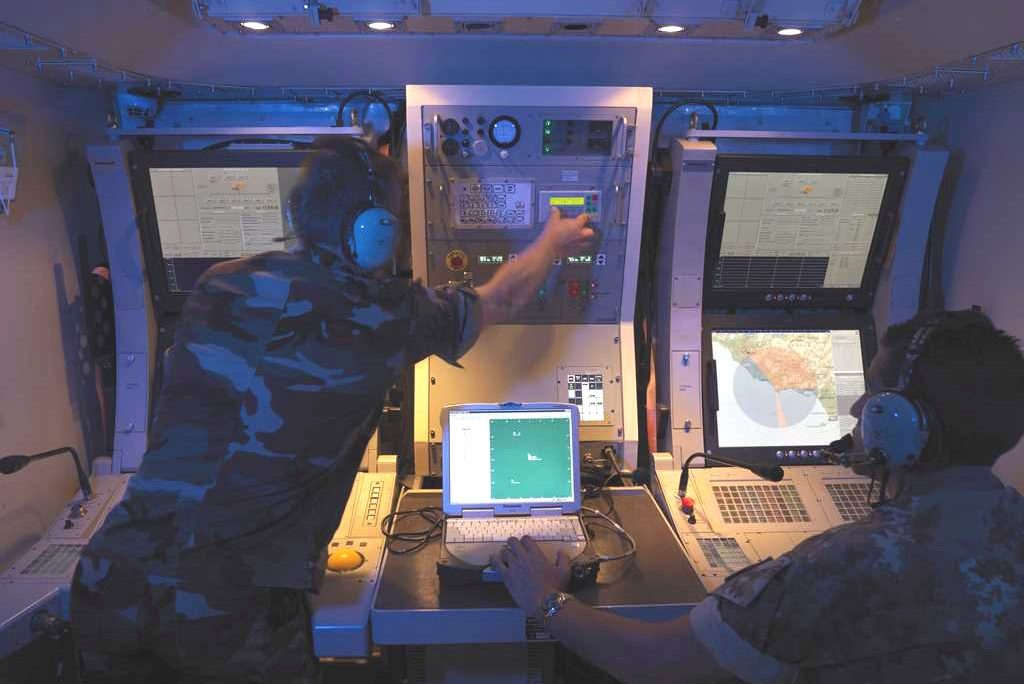
The new generation system
The SAMP/T NG contract programme, which is already operative, will see the adoption of new engagement (ME), command (MC) and radar & IFF (MRI + MGE) modules as well as the upgrade of missile launcher modules (MLT), in addition to the new Aster 30 B1NT effector.
The new engagement and command post modules have been designed to achieve a capacitive increment in terms of tactical management of operational airspace, higher interoperability, and will allow treating simultaneously a higher volume of threats in an enlarged airspace arena. The new engagement module also features some growth potential (such as integration with other ground air defence systems, acting as tactical operational centre). In terms of functional and software architecture, the SAMP/T NG maintains software elements already acquired in the development of the software open architecture in the framework of the initial phase of the Sustainment & Enhancement (S&E) contract. Additional capabilities will be provided by the increased number of operator consoles and software functionalities that will optimise C2 activities and the tactical air space management. Each engagement and command post module will feature a completely new generation hardware with increased computing capabilities and four operator consoles (versus two of the current system) with new generation, large touchscreen colour displays and ergonomic console providing enhanced human-machine interface (HMI) capabilities for a higher data and track volume management.
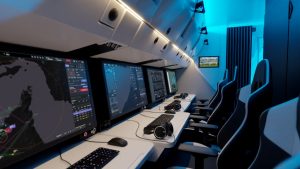
In the Italian battery configuration, the future ME NG (specifically named MEC for the Italian variant as it will feature both ME (Engagement Module) and MC (Command Post) functions) will have the same layout for both SAMP/T NG configurations (French and Italian). The difference will be in SW functions that will be given to the Italian variant to perform the activity as MC. The Command Post (MC) will therefore present the same layout and capabilities of the engagement module (ME), allowing the MC to take over ME duties should the latter fail.
The system is also set for any future requirement and development that will allow inserting new capacities. The new system will also have an enhanced set of communication equipment allowing for a higher data and more secure distribution of information, including software-defined radios and data links such as the latest Link 16 evolved standards (STANAG 5516 Edition 8).
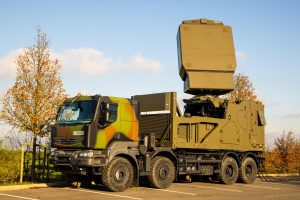
To fully exploit the capabilities offered by the new munition and maintain a technology and operational edge, alongside the resolution of the medium-long term obsolescence issue of the current ARABEL 90 multi-function radar module, the two MoDs decided to respectively introduce a new national system each. The French MoD selected the Thales France Ground Fire 300 (GF 300), which shares the same fully digital 4D AESA antenna and software defined architecture already developed for the naval Sea Fire four fixed faces (4FF), to be fitted to the Frégate de Défense et d’Intervention (FDI). The Ground Fire 300 – single rotating but larger antenna, and the Sea Fire 4FF solution, share the same digital level at antenna’s elements and the Gallium Nitride (GaN) technology into transmitter-receiver modules (TRMs), together with a wide RF bandwidth for high range resolution and non-cooperative target recognition (NCTR). With a software defined architecture providing mission performing through software and growth potential through software updates to handle new threats and new tasks, according to Thales, the new radar has 360° azimuth and 90° elevation coverage air surveillance capacity, a 400 km range; it can track up to 1,000 targets, with an update rate of 1 Hz in rotating mode and up to 10 Hz in staring mode- With an SSR/IFF system compliant to NATO Stanag 4193 edition III, the GF 300 has an enhanced surveillance capability on all targets, claims Thales, from slow moving and very low radar cross-section to fast up to hypersonic, or highly manoeuvring targets, with range performance to autonomously engage short-range ballistic targets in rotating mode and medium-range ballistic missiles in staring mode when cued. The GF 300 comes in a single 20’ ISO container with a weight under 10 tonnes, which can be deployed in 15 minutes and decamped in 10 minutes. It is transportable by road, rail, and tactical aircraft (C-130 or A400M type).
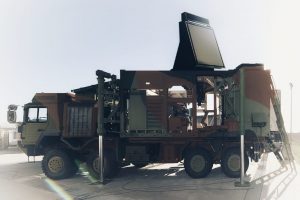
The Italian MoD selected the Leonardo Kronos Ground Mobile High Power (Kronos GM HP) system, the development and procurement programme approved late last year by the Parliament including five radar systems and a ten-year logistic support package. Based on information released by the Italian MoD, the new 3D multifunction AESA radar will have surveillance, tracking and engagement performances in line with the requirements of the SAMP/T NG, allowing to counter more efficiently a wider range of ABT and ballistic missile threats, thanks to the new Aster 30 Block 1NT missile. Beside coping with the increased threat scenario, the new system must ensure ‘plug & fight’ integration with the engagement module and be able to deal with evolutionary developments of the SAMP/T NG system. No further technical information was provided, but according to the development roadmap of the Leonardo Kronos family, EDR On-Line understood that the GM HP will be based on the same system being developed for the Italian Army Forza NEC programme but, thanks to the software defined design, a dedicated software was developed to respond to specific SAMP/T NG requirements. Based on the current Leonardo Kronos Ground Mobile radar architecture, the HP differs for the use of GaN versus Gallium Arsenide (GaAs) TRMs, already used, together with new processing and algorithms, in the naval Kronos 4FF version being provided for the Italian Navy’s Pattugliatore Polivalente d’Altura (PPA). The HP will feature a single rotating antenna, as for the GM family, with a revised architecture to cope with the higher-power TRMs including cooling enhancements, as well as the same new radar system processing and algorithms developed to cope with challenging emerging threats such as higher-speed low-radar cross air-breathing weapon systems and ballistic missiles, the latter characterized by demanding trajectories and terminal guidance with separable warheads. Leonardo demonstrated the BMD capabilities of its Kronos radar family at NATO levels through “At Sea Demonstration/Formidable Shield” naval integrated air and ballistic missile defence (IAMD) initiatives, where the Italian Navy FREMM frigates were equipped with modified Leonardo MFRA multi-function single-antenna 3D radar with GaAs TRMs. No details were released about the HP performances, but the already fielded Kronos Grand Mobile offers a 300 km instrumented, mission configurable surveillance elevation coverage, and a 90° tracking elevation coverage in any mission/configuration thanks to its software defined architecture. The new GM HP radar will have an integrated phased array IFF system compliant with Stanag 4193 edition III, able to operate in staring mode by electronic scanning, and will come in a mobile configuration in an ISO 20 standard container transportable by aircraft, ship, rail or standard/high-mobility vehicle, ensuring reduced deployment time, indicated in 15 minutes.
The MLT ground vertical launch module with eight missile launchers, which in the current configuration is capable of a rate of fire of two missiles in less than one second and all eight missiles from the same launcher in about 10 seconds, will be enhanced according to Italy MoD’s Land Armament Directorate with new Thales St@r Mille HP UHF-band software defined radio providing secure and more capable and distant communication links with the engagement module, and with a new launcher/munition control, alongside the monitoring system and software, in addition to a complete system overhaul. Thanks to these enhancements, the MLT will be able to operate the current and new ammunition and foreseen developments.
According to Eurosam, thanks to the new rotating AESA multi-function radar and to the new Aster 30 Block 1NT, the SAMP/T NG will have a radar detection range exceeding 300 km and an intercept range of 150 km.

